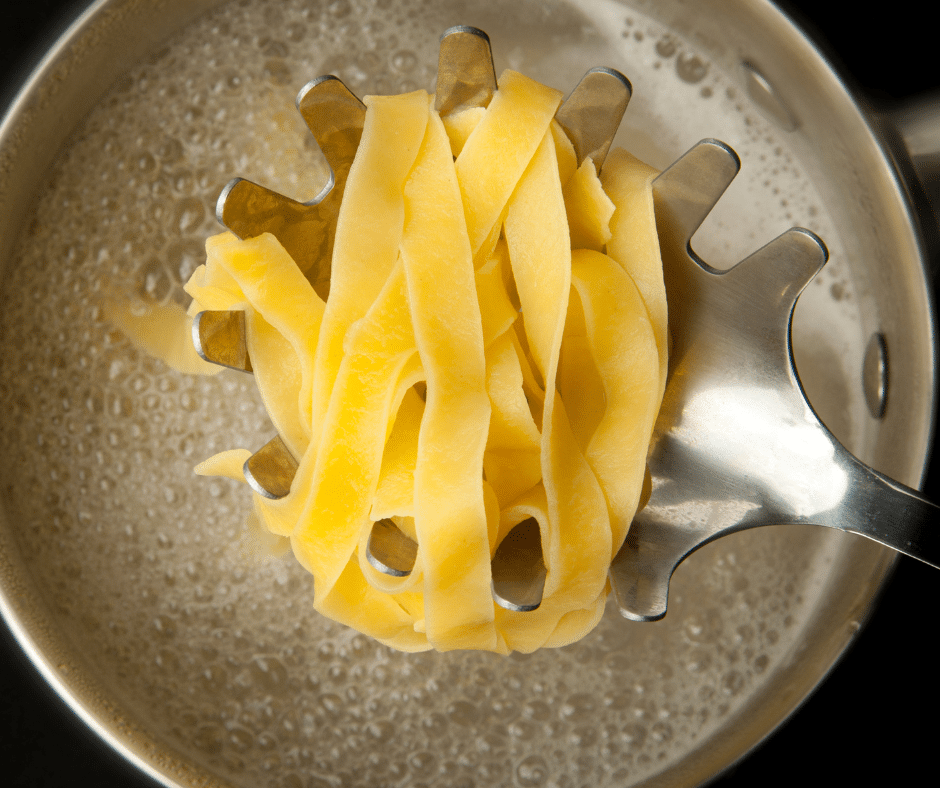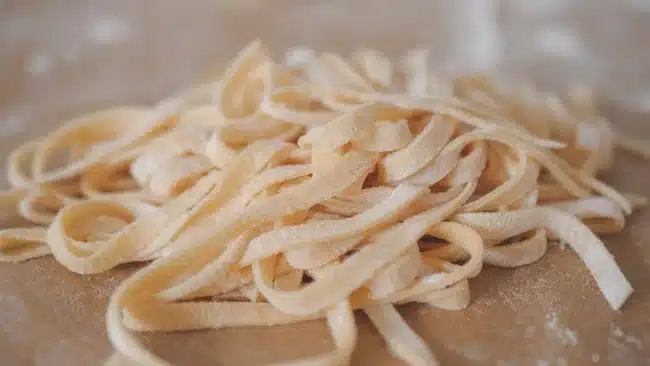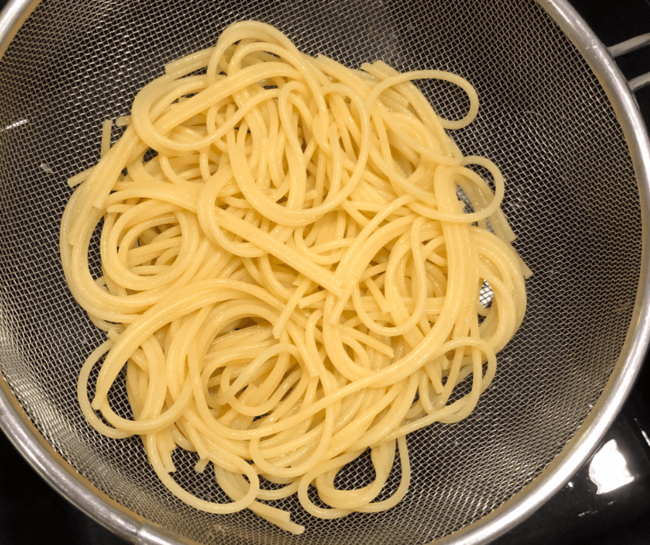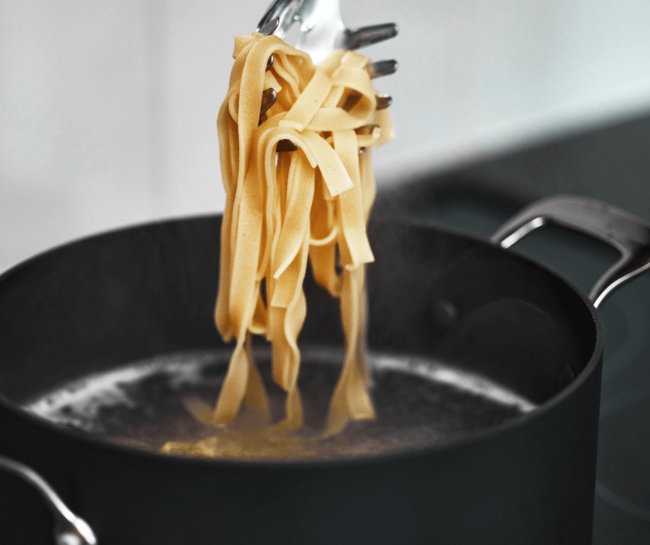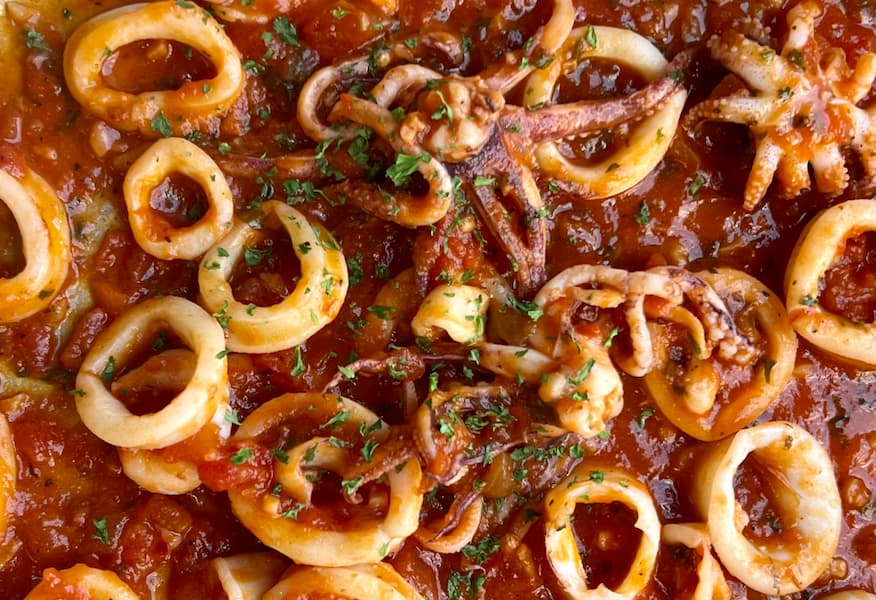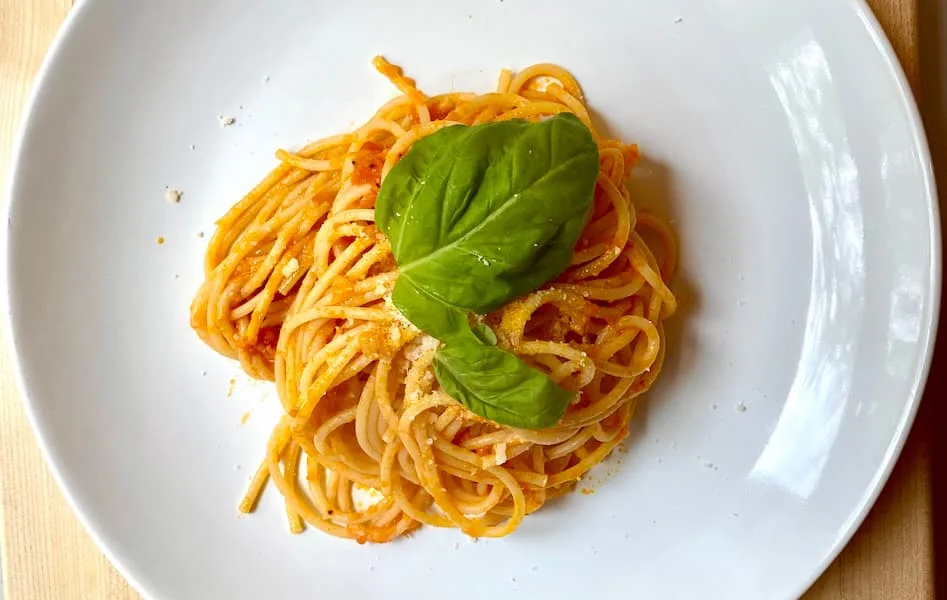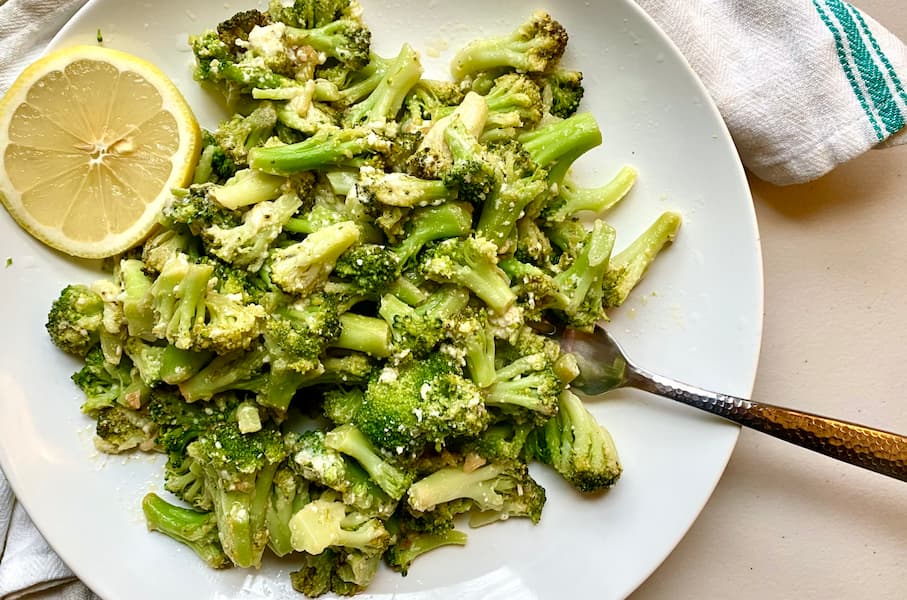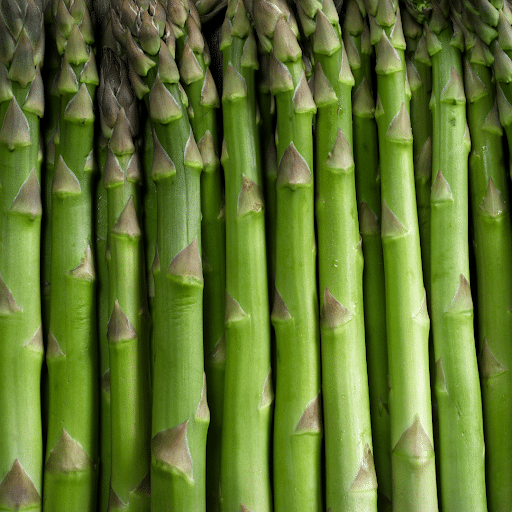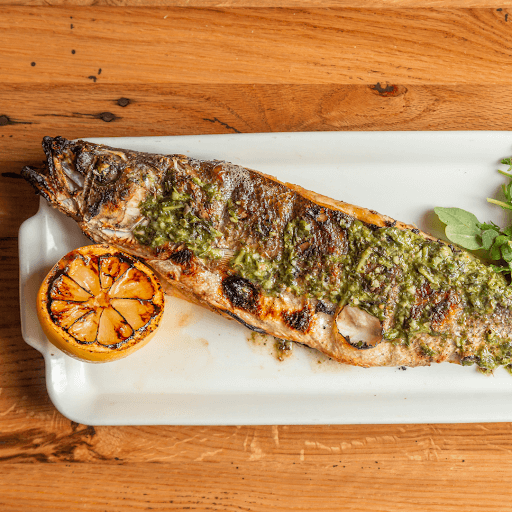Cooking pasta usually comes as a no brainer for anyone who grew up in an Italian household. When you spend your childhood watching your grandmother make the same thing every day, you internalize the process pretty quickly. But for the same reason, it is easy to take some things for granted when you explain it to someone else. If you stop and think about it, there’s a lot to say about it. So, I decided to write a little guide. If this is your first time cooking pasta, or if you would like to learn more on how to cook homemade pasta this post is for you.
In the next few paragraphs, I will explain everything you need to know about cooking each type of pasta to perfection. Long pasta v. short pasta, dry pasta v. egg pasta…by the end, you’ll know how to cook them all as if you were my nonna!
What’s The Big Deal About Al Dente Pasta?
In case you’ve ever wondered why every food blog stresses the importance of cooking pasta al dente, here’s the reason.
Al dente translates to “to the tooth”, and it means that the pasta has been cooked until it’s firm to the bite, but not overly soft or mushy. This texture gives it a satisfying chewiness and allows it to retain more of its natural flavor and nutritional value. Additionally, it also allows sauces to cling better to the pasta’s surface, enhancing the overall quality of the dish.
If you’re using store-bought pasta and want to cook it al dente, you just need to drain it about one minute before the cooking time written on the package instructions. Some producers even write 2 distinct cook times on their boxes: one for cooking al dente, and one for those who like their pasta a little more soft.
But what to do if you’re using homemade pasta? Let’s see how to make the perfect al dente pasta step by step!
How Much Water Should I Use To Boil Pasta?
First, the very basics!
If you look online, you will see that many people suggest using at least 6 quarters per pound of pasta. However, I think this measure is excessive and results in a lot of waste. A gallon of water per pound is more than enough.
More than the quantity, you should focus more on the temperature and saltiness of the water.
The water should reach a full boil before you add the paste. That way, it will cook perfectly without getting mushy or losing its flavor.
It is also important that it is salted. Speaking of which…
How Much Salt Do I Need For Pasta?
The water in which you cook the pasta should always be salted. This will ensure that the pasta is well seasoned from the inside-out and improve the overall taste of the dish.
You don’t need much salt for this. The traditional rule of thumb is to use a teaspoon per liter. I usually go with a little less than one tablespoon per quarter of water.
Don’t worry, this won’t impact much on your sodium intake.
First of all, consider that a gallon of water is enough to feed 4-6 people. Second, the pasta will absorb less than 30% of the salt in the water. If you do the math, you’ll see that the sodium content per portion is very low.
How To Correctly Boil Pasta
Yes, the way you boil your pasta matters, too. 😀
Some people add it to the water right from the beginning, thinking that it will make them save time. However, this will totally ruin the texture of the pasta, making it overly mushy. Also, if you’re using store-bought pasta, the time needed to cook it will not match with what’s written on the package, which could lead you to make mistakes.
Here’s what you should do instead.
Before you do anything, wait until the water reaches a rolling boil. Then, you can add the salt. This is because salted water takes longer to reach a boil, so adding salt at the beginning would make you waste time.
After adding the salt, the water will stop bubbling. Wait until it reaches a full boil again, and finally add the pasta.
How Long To Cook Homemade Pasta?
Now, the most important part.
The right cooking time depends on whether you’re using dry or fresh pasta.
How long to cook fresh pasta?
Fresh pasta like fettuccine, tagliatelle or tortellini usually takes below 5 minutes to cook – sometimes just 2 or 3. There’s not really a set time, but here’s a useful rule of thumb.
As the fresh pasta cooks, it will start to rise to the top of the water. When it reaches surface level, it means that it’s ready. Give it a bite to check that it is al dente and, if necessary, leave it there for a few more seconds before draining it.
Easy, right?
There’s some fascinating science behind this method. The floating happens because eggs tend to trap a lot of air when used for kneading. This makes fresh pasta more buoyant than dry shapes. Also, when the pasta reaches the right temperature, its starch emulsifies into a gel, lowering its density. This, together with the higher buoyancy brought by the air in the egg content, makes it rise to the water’s surface level when it’s ready.
I doubt my ancestors gave much thought to that, but they were quick to notice that fresh pasta floats when it’s ready, and now this method is the standard way of cooking it in many households.
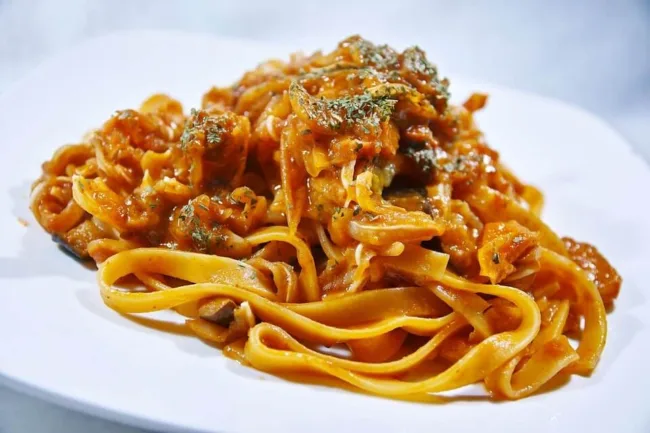
How long to cook dry pasta?
Dry forms of pasta such as spaghetti or penne, on the other hand, require a separate discussion. In this case, the pasta needs to rehydrate and will take a little longer to cook. Also, it will not float when ready.
So, how to tell when it’s cooked?
Looking online, you can find a lot of false myths about how to cook dry pasta without knowing its cooking time. From the classic “throw it against the wall,” to a more timid “drop it on a flat surface and hear what noise it makes,” to other tricks that only serve to waste good food.
The reality is far less picturesque.
Most dry pasta shapes take 8 to 15 minutes to cook. Knowing this, after the first eight minutes have passed, you only need to taste it occasionally until it is al dente.
If you don’t want to spoil your appetite or risk burning your tongue, you can also take a piece and cut it in half. If its internal color is even, it means it is ready. If, on the other hand, you see a white ring or dot in its center, it means you need to wait a little longer.
This method can come in handy if you have to cook several kinds of pasta in a row and don’t want to eat too much of it before serving. But just between us, I’ve never used it 😉
Wait… What About Baked Dishes?
Baking pasta is a popular method for creating hearty and comforting dishes like baked ziti, lasagna, or macaroni and cheese. The baking time can vary depending on the precise recipe and type of oven used, but here are a few general instructions.
To do it right, start by boiling your pasta until it’s slightly undercooked. For fresh pasta, this means a little less than 1 minute. Dry pasta, on the other hand, will require about 6 minutes, or ⅔ of the recommended cooking time on the package. This ensures it won’t become too soft when baked.
Meanwhile, take your desired sauce and place it on a working surface next to a baking dish. Now, combine it with the pasta, layering them in a baking dish, and top with cheese, breadcrumbs, or any desired toppings for texture and flavor.
Bake in a preheated oven at around 350-375°F (175-190°C) until the top is golden brown, and the dish is bubbling and heated through. It will typically take about 25-30 minutes, although some recipes may require up to 45 minutes.
If you are looking for some inspiration, we have tons of baked pasta recipes on our blog. Chuck & Sebby are masters of dishes like lasagna and baked ziti, and they make them everyday for their customers at Mortadella Head. Go check them out!
@mortadellahead Buffalo chicken baked ziti as inspired by @thesecarbsdontcount ❤️🔥😩 #NextLevelDish #buffalochickenpasta #buffalochicken #bostontiktok #bostonfood #mortadellahead ♬ It’s A Wrap – Sped Up – Mariah Carey
FAQs
Is it true that I should put olive oil in the pasta water?
No. Many people do this because they believe it keeps the pasta from sticking, but all you’ll get is to float it on top of the water while your noodles cook on the bottom. Remember: water and oil do not mix. The only good way to keep the pasta from sticking is to stir it often while cooking.
Large pot, small pot or pressure cooker: where should I cook my pasta?
A large pot is the traditional choice, as it provides ample space for the pasta to cook evenly without sticking or clumping. It’s also very handy when you need to cook long pasta shapes like spaghetti or fettuccine. Small pots offer less room for the pasta, but they can be suitable for cooking smaller quantities quickly. When I am cooking on my own, I often use my old mess tin, as it brings the water to a boil in no time 😀
If you want to reduce the time needed for reaching the boiling point without compromising on space you could use a pressure cooker. If you’re cooking for more than one, it could come in handy for busy weeknight dinners. However, it’s essential to follow the manufacturer’s guidelines to prevent overcooking or making the pasta too soft.
Ultimately, the choice depends on your time constraints and the desired outcome for your pasta dish.
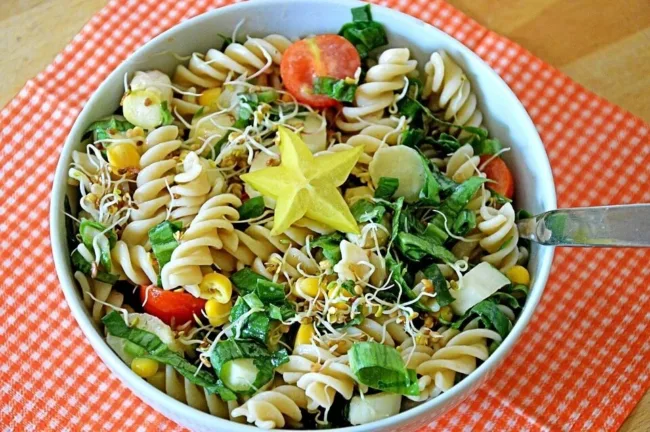
Can I toss the pasta in the pot while the water is still cold?
I wouldn’t do it. Adding the pasta to cold water won’t help you cook it faster. Also, it will probably make it mushier and less flavorful. Its best to bring the water to a rolling boil, add the salt, wait for it to boil again, and then add your pasta.
High heat vs. low heat: which is best when cooking pasta?
The best way is to keep the heat high before adding the pasta, and to lower it at the minimum afterwards. This will help you save some gas/electricity. Also, if you cook pasta on high heat, part of the water will turn into a foam and come out of the pot, staining your stove.
Now you know everything you need to make all your favorite pasta recipes like a pro. Once you’ve done cooking, transfer the dried pasta onto a tray or into a bowl, and dress it with your favorite sauce.
Be it tagliatelle al ragù, chicken alfredo, rigatoni alla vodka or carbonara, I’m sure it’ll be a success.
If you’re looking for some inspiration, go check our archive of pasta recipes! Pasta holds a special place in our hearts and on our plates, and we’ve curated a delightful array of recipes that embrace tradition while inspiring innovation. Whether you’re seeking comfort in classics or exploring the exciting world of pasta fusion, our blog has it all. Don’t miss out on the chance to elevate your pasta game – come explore the magic of Mortadella Head’s pasta creations today!

